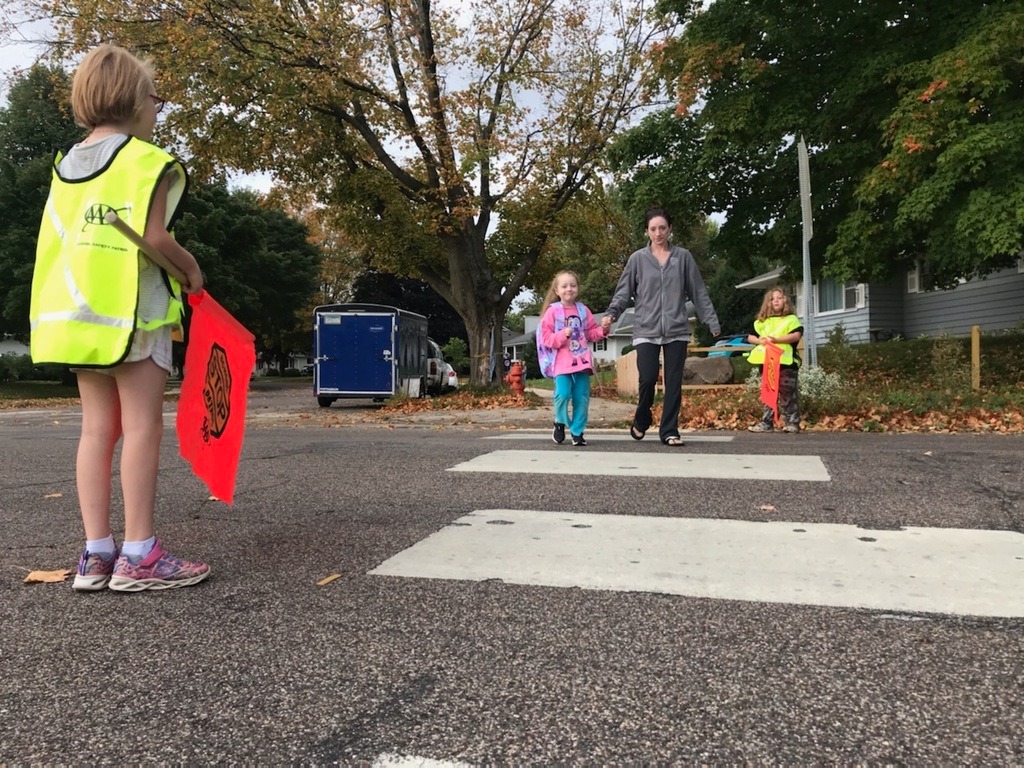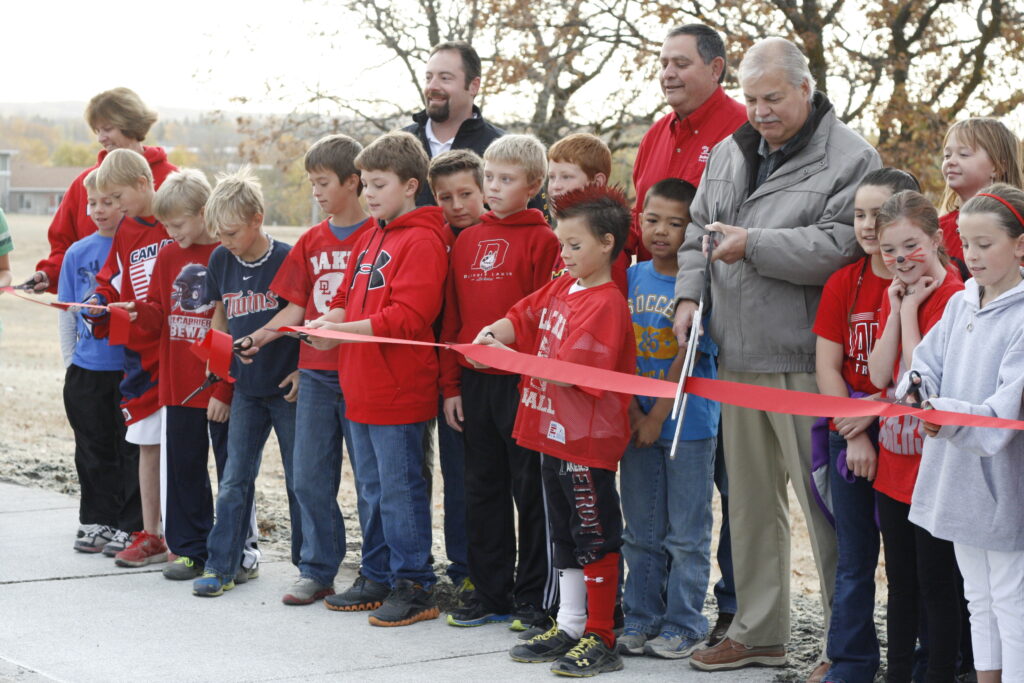Engineering

Engineering improvements focus on making changes to streets, trails, and sidewalks to improve walking and biking conditions. They generally aim to reduce vehicle speeds, address conflicts points, and provide fully accessible sidewalks and crossings near schools.
Many communities were not designed to be safe and comfortable for people walking and bicycling. Walkability and bikeability audits can help identify areas around your school in need of improvements such as crosswalks, signals or bike facilities. Once problem areas are identified, communities work with local governments to identify funding sources for construction. One potential funding source are MnDOT Safe Routes to School grants.
MN Safe Routes to School Engineering Resources
- Engineering Solutions Guide
- Infrastructure Toolkit – Facilities that can improve conditions for pedestrians and bicyclists
- Infrastructure Reference Guide – More detailed information about a variety of treatments that can improve safety conditions for pedestrians and bicyclists
- MN SRTS Walk Audit Tip sheet Introduction to neighborhood walk audits and the MnDOT SRTS Neighborhood Assessment Tool.
- Minnesota’s Best Practices for Pedestrian/Bicycle Safety – Resource guide to assist with the development of SRTS plans or projects.
- School Zone Resources – Two page overview of laws and best practices related to school zones in Minnesota.
- Minnesota Manual on Uniform Traffic Control Devices – Traffic Controls for School Areas – Detailed guidance on the use of school zone signs, pavement markings, the use of adult crossing guards and setting school zone speed limits.
Guiding Principles for Safe Routes to School Engineering Solutions

Because the purpose of Safe Routes to School is “to enable and encourage children, including those with disabilities, to walk, roll and bicycle to school,” engineering solutions should be focused on calming traffic and providing continuous facilities for pedestrians and bicyclists.
Other guiding principles for Safe Routes to School Engineering solutions from the National Center for Safe Routes to School include:
- Infrastructure within the school zone and beyond is a prerequisite for walking and bicycling. The physical environment often determines whether many children walk or bicycle to school. To safely walk or bicycle to school along a street or separate path, or to cross a street along the way, children need well-designed, well-built, well-maintained and accessible facilities.
- Accessibility is required. Accessible infrastructure is essential for enabling children with disabilities to walk and bicycle to school. Smooth, wide sidewalks with ADA-compliant curb ramps create safe routes for:
- Wheelchair users
- Pedestrians with vision impairments
- Groups walking together
- Younger bicyclists
- Parents with strollers
- Minimize the number of conflicts. A child’s route to school should have a minimal number of busy street crossings and once the child reaches school property, he or she should be able to enter the school building without crossing driveways and parking lots.
- Engineering treatments should be context-sensitive and matched to the type of problem. Signs alone are not generally enough to change behavior. Painting a crosswalk on a busy arterial street without additional interventions will not do much to improve the safety and comfort of pedestrians trying to cross. This also means that engineering solutions should be implemented along with programmatic elements to comprehensively address the issue.
- Focus on easy to implement and low-cost solutions first, while longer-term improvement needs are identified and the implementation process is begun.
- Examples of low-cost, short-term solutions include trimming vegetation, adding signage and new pavement markings.
- Longer-term solutions may include parking changes, constructing a new path or sidewalk and installing traffic control devices.